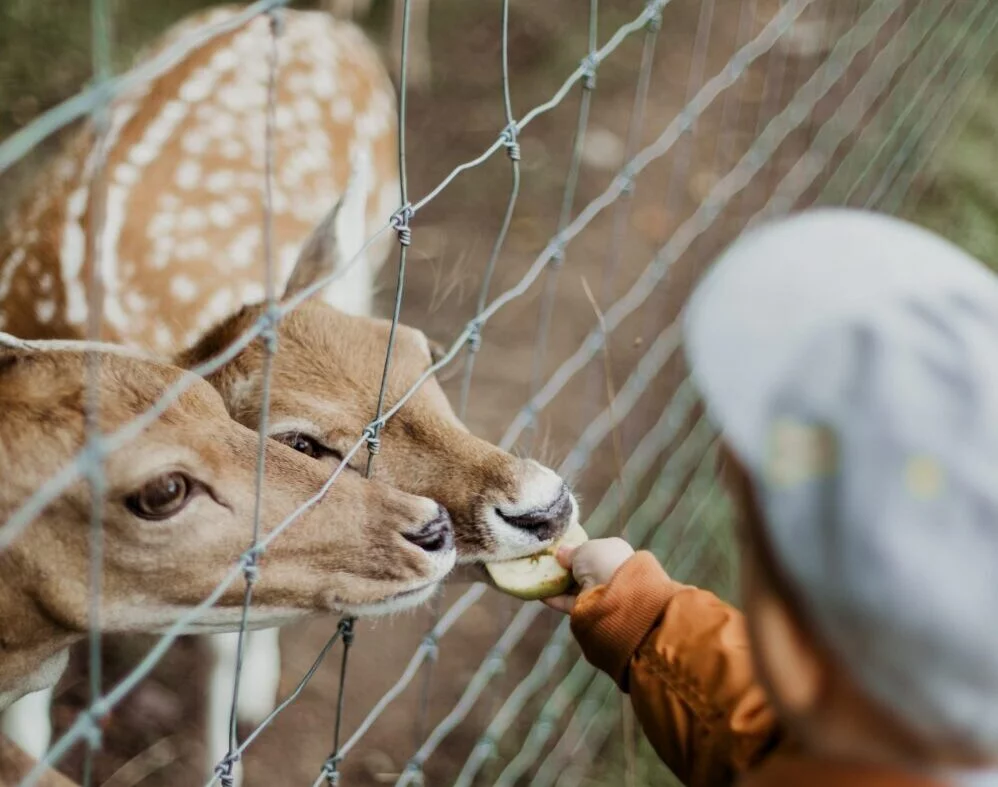Five Ways to be a Good Zoo Visitor
As captive wildlife facilities like zoos, aquariums and sanctuaries open their doors to visitors again around the world, after the restrictions of the COVID-19 pandemic, many of us are keen to get back to normality following lockdown. With this in mind, in our latest blog we highlight the crucial steps you can take to ensure you’re a good zoo visitor and put animal welfare first when visiting wild animals in captivity.
Zoos, aquariums and sanctuaries come in all shapes and sizes. They can be set in a rural area or in an urban or city environment, they can be large or small, historic and well-known or new and relatively unknown. They may advertise large, exotic animals or small, native species. But the one thing you should really be considering before visiting is not what size they are, but how much they are doing for their animals – are they a good zoo with good animal welfare?
Facilities which keep wild animals in captivity should be based around education, research, conservation, environmental sustainability and recreation, and while these are important goals, underpinning them must be good animal welfare. Good zoos, aquariums and sanctuaries should give their animals space to roam, animals should have choice and control over how they explore their enclosure, they should be able to experience natural substrates, such as grass and sand, as well as trees, rocks and other structures, and they should look relaxed and in good health.
Before going to a zoo or other captive facility to see wildlife, there is lots you can do to ensure the animals are being well cared for and not exploited or harmed, and therefore reassure yourself that you’ve done all you can to ensure good animal welfare before you visit.
Here are five steps you can take to ensure you’re a good zoo visitor.
1. Research the zoo website before visiting
Look for membership to associations. If the zoo is a member of a national, regional, or international association it means they have met certain standards in terms of conservation, education, research, animal care, safety, and possibly animal welfare. This is not a foolproof measure and will not mean the zoo has perfect welfare, but it goes some way to indicate the facility is following certain minimum standards of care and welfare.
Check images for signs of healthy animals in natural environments. How do the animal enclosures look in website images? Do enclosures look natural, similar to environments you might find these animals in when in the wild? A natural environment that closely resembles its wild habitat is a good indicator the zoo understands its animals and is trying to ensure they are providing a good set-up for them in captivity.
2. Animal entertainment and animal interactions- what is the zoo offering?
Captive wildlife must be allowed to exhibit their natural behaviours and not forced to perform unnatural tricks or stunts, or forced into interactions with visitors. Before a visit use the facility’s website to see what shows, performances and visitor interactions they offer. Animals should be showing behaviours you would expect to see in the wild, not unnatural tricks or stunts and we do not recommend you take part in selfie experiences or riding wild animals. Think about how the animals may have been trained to take part in visitor interactions and where they might have to be kept while they are not performing.
If you see anything that you think compromises animal welfare or doesn’t seem right, we would suggest you do not visit.
Once at the zoo, you want to see that animals are given choice as to whether they take part in activities or not. If there are public performances using animals, are they animal-friendly, how is it impacting the animal’s welfare? Think about the environment the animals are expected to perform in, is it loud, is it unnatural, are they performing circus-like tricks? There may be presentations given by staff where they offer information about the animals and during these they may offer opportunities to interact with animals, if anything you see seems inappropriate then do not engage in these activities and if you feel animal welfare is being compromised you can report your concerns to us.
3. Zoos have a role to educate, is there informative signage for you as a visitor?
Although a zoo is essentially there as recreation, it should also be performing educational and conservational roles. You should expect to see signage about the animals you are visiting, giving you information on their common and scientific names, where they are found in the wild, the habitats they live in and their conservation status as a minimum – this is informal learning, where you can find out more about the species you are observing.
If sign descriptions of the animal’s natural habitat bear no resemblance to its captive environment then it is unlikely to be able to experience natural behaviours and its welfare will be compromised. There may also be other signage about what conservation action the zoo is taking to help conserve this species in the wild and what action you can take to help the species or their habitats.
Can you use your day at the zoo to think about what new actions to take or habits to make that will help wildlife around the world?
4. Proper feeding – what not to do
All wild animals have specific diets which they have evolved and adapted to consume. Unless you are instructed by animal keeping staff, do not feed any animals or throw anything into their enclosure that they might try to consume. Doing so could have a negative impact on the welfare of the animals you are visiting in the short or long-term. Pay attention to the food animals are being offered by the staff and how it is being presented, what can this tell you about the species and how is that food perhaps being used as a form of enrichment (for example, a messy capuchin monkey enclosure may only look messy to you, because the staff have scattered fruit, nuts and seeds all over the floor, to enable the monkeys to forage for their food, as they do in the wild).
If you are allowed to feed animals, by purchasing food or taking part in an experience, consider if it is part of their natural diet, would they eat this in the wild and are the zoo regulating how much is being fed to the animal over the course of a day? Unregulated feeding can lead to unnatural behaviours such as begging, and may cause health problems such as tooth decay and obesity.
5. Respect the animals at all times
Good zoo visitors do not disturb animals for entertainment, although this is sadly something regularly seen at the zoo. While walking around a wild animal facility, it is very important to respect the environment and the staff but most of all the animals. Some species may be naturally timid, some may sleep or rest during the daytime or when it is very hot. Many species will relish zoo visitors and enjoy observing you as much as you enjoy seeing them, but not all of them. It is not appropriate to shout at animals, try to wake them up, throw things into their enclosure or bang on the glass or fencing. Remember you are the visitor. Be respectful of their home and treat the animals as you would if you were visiting a friend’s house.
There are definitely a lot of things to consider when visiting wildlife in captivity, research is vital and being observant and respectful when you’re there are a must too. If you have any concerns about the welfare of animals in zoos, aquariums or sanctuaries that you research online or visit in person, you can contact us to make a report, as we may be able to help.
In taking these five steps and remembering that animals are sentient beings with the ability to experience and feel a range of emotions, just like us, then you’re doing everything you can to put animal welfare first.





